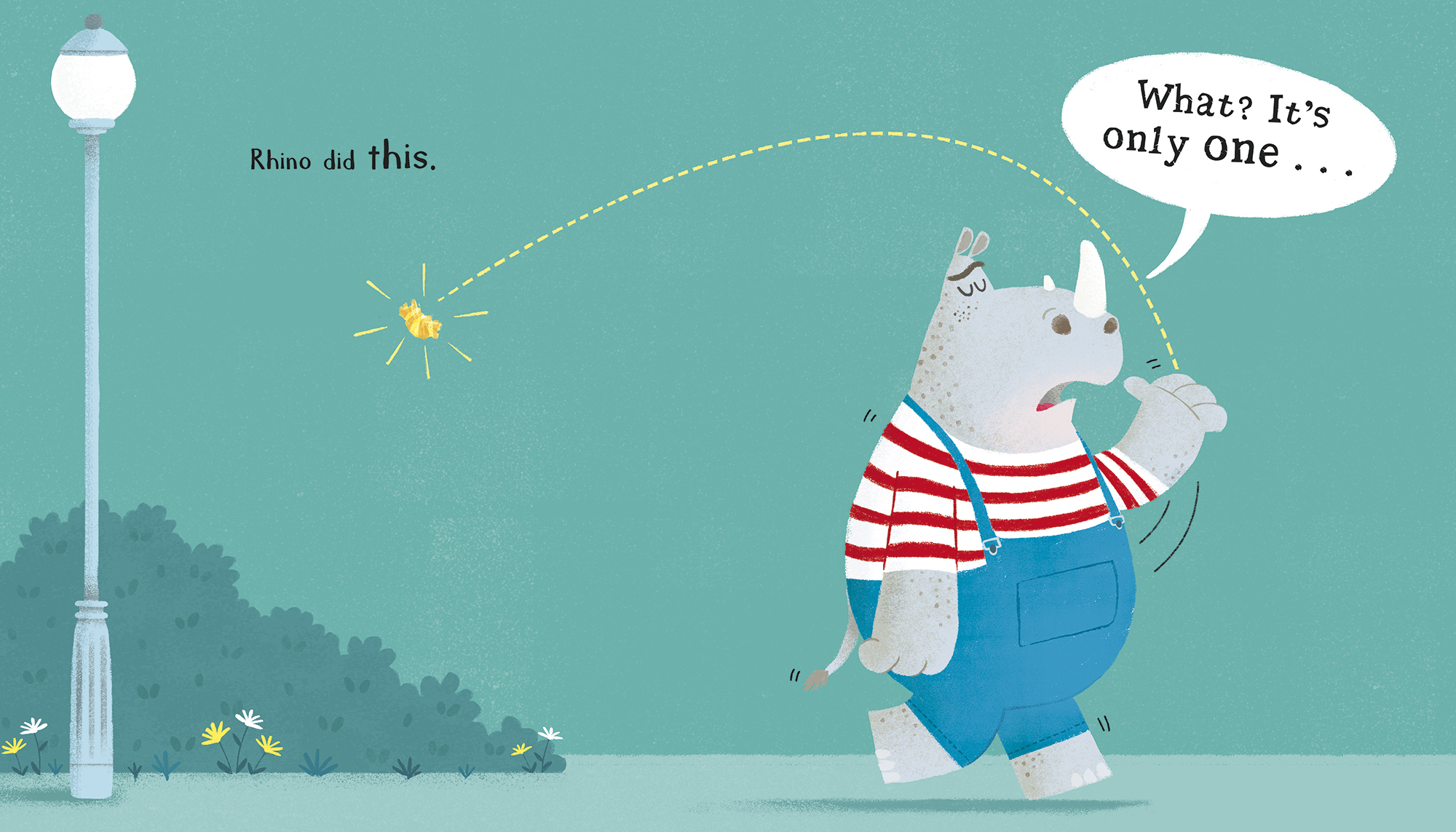Download this resource here: EIBF 2022 It’s Only One inclusive resource with images
Summary:
It’s Only One (by Tracey Corderoy, illustrated by Tony Neal) combines a simple text and a narrative that includes lots of easy actions. This makes it a great book to turn into a sensory story for children with additional needs (or indeed any children).
This resource is great for:
Encouraging engagement for children who find it difficult to focus on just text and image alone.
Encouraging participation and turn taking. Everyone can join in with the actions – and with the catch phrase ‘it’s only one’ which runs throughout the story.
Learning about looking after our neighbourhoods and being good citizens.
Props
These prop suggestions can be adapted to suit your child/children. For example, if visual props are not interesting for your child then choose things that make a noise (rustling crisp packets) or have a smell (a gentle flowery scent for mouse’s flower). And remember that you do not have to have all these props before you tell the story – even adding just a couple of props can make things a lot of fun.
Rubbish – sweetie wrappers, crumpled up newspaper, empty crisp packets etc. Look for things that are shiny or make an interesting noise.
Flowers – use a bunch of real flowers, or some fake ones.
Music – In a classroom you could record some music on to BIGmack (or similar) recording devices so that all the pupils can join in with competing bits of music. Shakers, drums, pots and pans or any other noise makers can also be used.
Flower in a pot – as above these could either be real or artificial.
Actions
Sunnyville was perfect: Greet the people (or imaginary people) around you loudly and politely. Wave and nod and call out: ‘How are you?’ (You could also put greetings on to BIGmacks for the children to join in with if you like.)
What? It’s only one: Pass out all your collection of rubbish and encourage your child/children to throw it away. It’s best not to use any rubbish that would hurt if it hit someone! (A note here – if you feel that this part of the story might actually inadvertently encourage your child/children to throw rubbish then get the adults in the room to do the throwing while the children tell them off.)
Giraffe was not happy: Pick the flowers by holding them between your thumb and index finger and then either picking them yourself with your other hand or encouraging the child/children to do this. Act outraged as they pull up the flowers!
It’s only one song: If you are reading the story in a classroom encourage everyone to hit their switches to play their bits of music at the same time. If it is just you and your child make as much noise as possible between the two of you, with shakers, pots and pans and your voices!
Everyone was grumpy: Stamp around, shaking your fists and growling – encourage the child/children to join in.
Mouse had an idea: If this part is quiet it makes a good contrast to the preceding pages. Gently encourage everyone to say: ‘Ssh!’ Show the flower quietly to everyone.
Now Rhino knew exactly what to do. Pick up the rubbish, encouraging everyone to join in. Give out the flowers again. You could maybe do some dusting, sweeping and polishing as well.
Sunnyville soon twinkled: If you want you could wave some flags or bunting – and then finish the story with a big cheer: ‘Hip hip hurray!’
Caution: Not all of these prop suggestions are toys! The props I suggest should not be used by children unsupervised.
